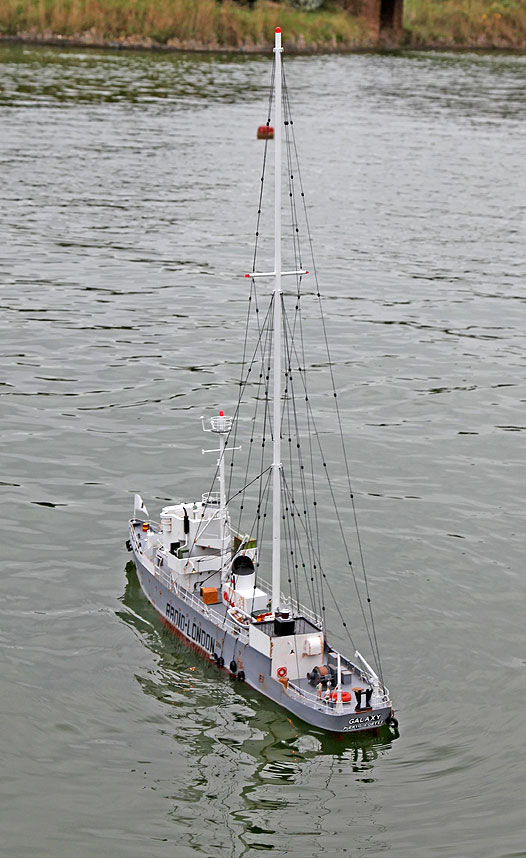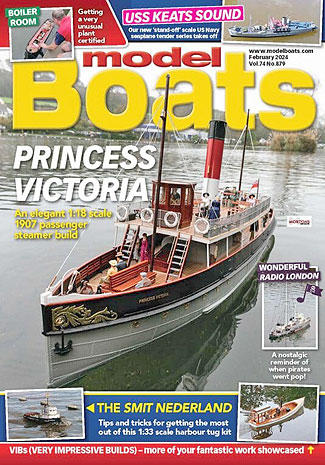 |
On the Cover of... ...not Rolling Stone, but Model Boats. Appropriately for Radio London's 60th Anniversary Year, the 2024 February issue of Model Boats magazine carries a photo feature by Nick Santon about the making of his scale model of the Galaxy. |
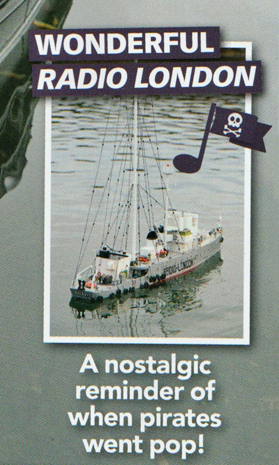 |
Starting in January 2004, Nick conducted years of painstaking research before he began working on his model. After much effort and research, he managed to acquire, from the US National Archive in Maryland, a copy of the original 10ft-long construction drawing of the minesweeper. Subsequently, he was able to rescale the drawing to 1:48. From the plans, it was obvious immediately that considerable modification had been necessary to turn the USS Density, an ex-military vessel, into a radio station. Nick found he had to make as many alterations when constructing his miniature Galaxy as had station co-founder Tom Danaher, when he fitted out the original Radio London ship in 1964. Nick also discovered that his model suffered the same problems of the massive antenna causing an unstable and top-heavy vessel. Big L's first Programme Director, Ben Toney, had been aboard the Galaxy when she sailed to England with that massive radio mast in place. In his memoirs, Ben wrote vividly about the perilous, 17-day ocean crossing with the ship bearing "the 200 foot antenna that had the capacity of capsizing the ship." "As the ship ventured out into the waters of the Atlantic," Ben recalled, "The swells became more apparent and the motion of the antenna accelerated. Passing over a swell, the ship would lean heavily to port or starboard, thus creating a vibration and a creaking noise which could be interpreted as a potential disaster on its way to happening. Bob Ables and I were always prepared for going over the side. On reading Ben's full account of the horrendous transatlantic crossing, it's clear that it was a miracle that the Galaxy made it to England and we ever got to hear Radio London. Nick's resolution of the problem of sailing his scaled-down version of the top heavy ship, was to construct for her a deep, heavily-weighted keel, that is removable for when she is on static display. Left: Closeup details, including that troublesome funnel and random portholes. As Nick explains, when the ship was modified, she went from having no portside portholes, to "having loads in totally random places." The beautifully modelled Galaxy was completed in 2021; the work had taken Nick 17 years from start to finish. He was rewarded with the accolade of 'Best Engineered Model' at the Waterways Model Boat Club Show. So far, the mini-Galaxy has sailed only on a boating lake and Nick has very kindly shared his personal photos of her on the water. However, Nick says he's hoping for a calm summer day, when he intends to return her, briefly, to the North Sea, where she belongs.
|
||
Rear view of the Galaxy sailing the calm waters of a boating lake |
||
All photographs of the model courtesy of Nick Santon and are © 2024
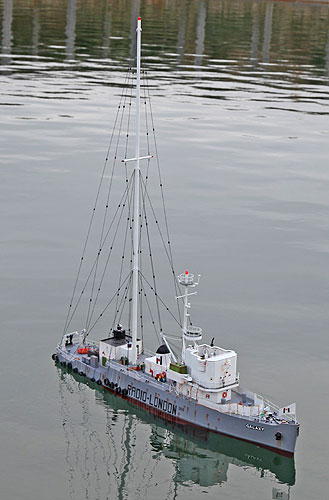 In his Model Boats feature, Nick carefully explains and illustrates how various components of the scale model were fabricated, and which parts of the ship proved the most difficult to reproduce in miniature. The funnel in particular was a challenge that Nick was able to overcome by using the cap from an aerosol spray as a base. The Galaxy's tiny flag was custom-made by a specialist company called Scale Flags and Ensigns, who printed the RL logo onto silk.
In his Model Boats feature, Nick carefully explains and illustrates how various components of the scale model were fabricated, and which parts of the ship proved the most difficult to reproduce in miniature. The funnel in particular was a challenge that Nick was able to overcome by using the cap from an aerosol spray as a base. The Galaxy's tiny flag was custom-made by a specialist company called Scale Flags and Ensigns, who printed the RL logo onto silk.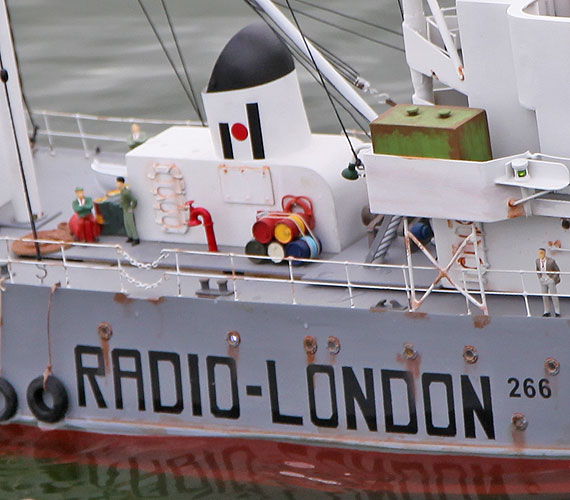 We kept our lifejackets nearby, and we never wandered very far from the lifeboats."
We kept our lifejackets nearby, and we never wandered very far from the lifeboats."